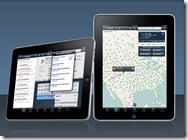Welcome to Wired!
 In many ways, maintaining the airworthiness of a transport category aircraft is akin to constantly reworking a jigsaw puzzle. Whether it is a pneumatic or hydraulic valve, tooling used for sheet metal repairs, or a bushing or bearing, each piece is important. For whatever reason, if it no longer measures up to its type certification data, the puzzle is incomplete, says ASIG Managing Director Luke Ribich, which means the airplane is not airworthy, unable to earn its keep.
In many ways, maintaining the airworthiness of a transport category aircraft is akin to constantly reworking a jigsaw puzzle. Whether it is a pneumatic or hydraulic valve, tooling used for sheet metal repairs, or a bushing or bearing, each piece is important. For whatever reason, if it no longer measures up to its type certification data, the puzzle is incomplete, says ASIG Managing Director Luke Ribich, which means the airplane is not airworthy, unable to earn its keep.
If a piece cannot be economically replaced or repaired, or it does not deliver the desired reliability, creating a new piece by reverse engineering the original may well be the most efficient and cost-effective solution, especially when its costs can be shared by a fleet over time because “high-volume programs can buy down the unit cost,” says Ribich.
For example: An airline with a DC-8 fleet needed engine thermocouple harnesses, an expensive item from the OEM with a long lead time. ASIG reverse engineered the harness, and manufactured certified PMA parts for a fraction of the cost of buying them from the OEM.
Better reliability is another benefit of reverse engineering, especially with pieces of older puzzles. “In their day, the 707 and DC-8 were good to have 70 percent dispatch reliability. Today, operators want 92 percent or better dispatch performance,” Ribich says, “and you might not get that out of some of those older materials and process designs.” In addition, “A lot of those old parts suffer from self-inflicted wounds, otherwise known as maintenance malpractice, caused by improper handling by technicians.”
To create a piece of the puzzle ASIG’s engineers dissect an existing product or component. Drawing on an arsenal of tools, from micrometers and laser scanning devices to testing equipment that analyzes metallurgy, hardness, surface texture, and electrical properties, there isn’t anything they don’t know about it. At the same time, they assess the original’s design for reliability, performance and material durability.
In crafting the new piece, which fits the airworthiness puzzle just as the original did, ASIG’s engineers employ all the advances made in design, materials, and manufacturing since the OEM created the original part. ASIG not only produces reverse-engineering technical data packages equal to those of its STC efforts, says Ribich, it can manufacture parts “that stand up to government verification, validation, and qualification” examinations.
Reverse engineering can also be a great learning tool. The lesson, he says, is to create compatible parts that deliver lower cost and better documentation and require less time to manufacture. MROs, (maintenance, repair, and overhaul companies) are turning to ASIG, seeking replacements for expensive parts with long lead times, like the bushings, bearings, and other fittings used in flight control system components.
“The OEM charges $60,000 for this hand-sized chunk of metal because of its captive market, which drives up the costs of these things,” Ribich says. Given the cost and lead time, when one reaches two-thirds of its service value, many airlines “will buy another one, just to have it in stock.” Replacing these items with reversed-engineered PMA parts enable MROs to give their customers more responsive, economical, and flexible service.
In the past, there was some question about using PMA parts on transport category aircraft. This issue came to a head with replacement blades for turbine engines, which are not inexpensive. But the FAA settled that issue several years ago, Ribich says, paving the way for greater use of PMA pieces in the airworthiness puzzle .
Until next time, stay 5x5, mission ready, and Wired!




 Most aircraft 110-volt AC outlets today deliver 500 volt-ampere power to whatever is plugged into them, like the cleaning crew’s vacuum cleaner. An iPad is not a vacuum cleaner. Like most PEDs, it has a lithium-polymer battery. Feeding too much juice to lithium batteries can lead to bad things. In
Most aircraft 110-volt AC outlets today deliver 500 volt-ampere power to whatever is plugged into them, like the cleaning crew’s vacuum cleaner. An iPad is not a vacuum cleaner. Like most PEDs, it has a lithium-polymer battery. Feeding too much juice to lithium batteries can lead to bad things. In  Of particular interest is section 4-1644E, Power Sources: When the iPad’s battery is the primary power source, aircraft power can be secondary, recharging the battery in flight. Continuing this thought, Section 4-1648A, EFB Power Source, points back to the PED PSS installation requirements. A note reiterates the safety hazards posed by over-charging or discharging lithium-ion batteries. “Operators should have lithium ion battery charging procedures which are in total accordance with the battery manufacturer’s charging instructions and prevent aggravation of lithium ion battery thermal hazards.”
Of particular interest is section 4-1644E, Power Sources: When the iPad’s battery is the primary power source, aircraft power can be secondary, recharging the battery in flight. Continuing this thought, Section 4-1648A, EFB Power Source, points back to the PED PSS installation requirements. A note reiterates the safety hazards posed by over-charging or discharging lithium-ion batteries. “Operators should have lithium ion battery charging procedures which are in total accordance with the battery manufacturer’s charging instructions and prevent aggravation of lithium ion battery thermal hazards.”

